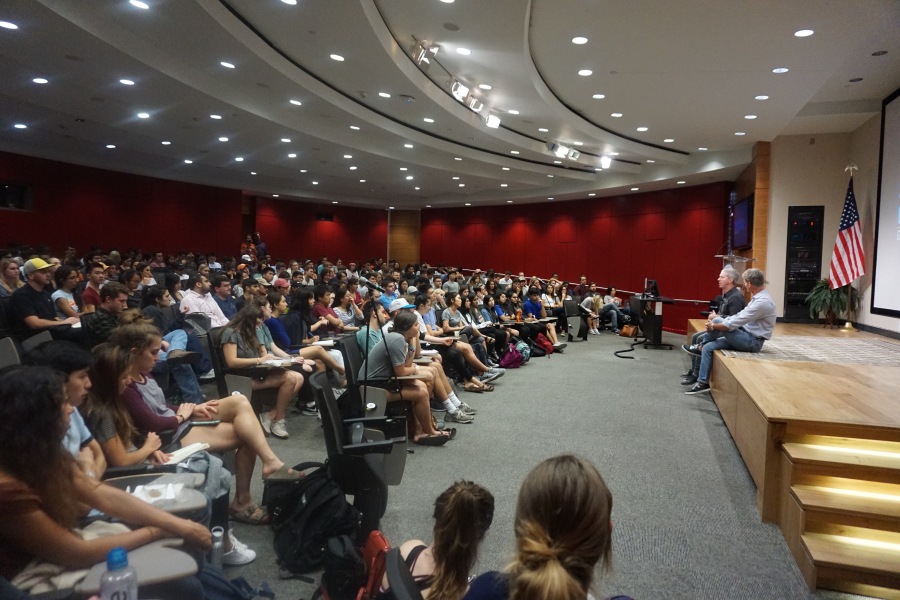By Victoria Nickerson
AUSTIN, Texas – In a lecture on Nov. 30, Azie Dungey, creator of the satirical web series “Ask a Slave” and writer for the Emmy-nominated Netflix series “Unbreakable Kimmy Schmidt,” discussed how to navigate conversations about slavery and its lingering ramifications in our current socio-political climate.
Dungey’s critically acclaimed web series was inspired by her experience working as a character interpreter on historic tours of President George Washington’s Mount Vernon. Through her portrayal of Washington’s house slave Caroline Branham, Dungey was confronted with visitors’ reactions and felt compelled to satirize the experience.
During her lecture, Dungey explained how her personal experience became a lesson depicting the racial climate in America. She shared how visitors often voiced inaccurate preconceived notions about slavery and early American history.

“I found that I was sort of caught between the nostalgia that the visitor brought and the actual history that I was representing,” said Dungey. “And if memory is identity then my very presence was a threat to the visitors’ understanding of themselves as citizens, as people and as Americans.”
Dungey explained that her character portrayal became a physical embodiment of the history visitors didn’t want to accept, leading them to explain away slavery’s effects.
According to Dungey, when slavery is discussed, avoidance, denial and rationalization emerge as people grapple with the truth. In her experience, visitors often tried to modify facts by saying that the Washingtons were nice so slavery wasn’t all bad.
“No matter how good you have it, if you don’t own your own body then your life pretty much is not yours in any respect,” said Dungey. “That’s not only scary but it means that whatever potential you feel you have, you can never achieve it.”
Dungey explained that the best way to react to misconceptions and ignorance is with empathy. While we can’t help that slavery has led us to our current social situation of economic imbalance and racism, we can combat mistruths with evidence and compassion.
“Dungey’s perspective made me realize the impact that slavery still has on America today,” said Meredith Palmer, sophomore journalism major. “Although tensions remain high, she gave me hope that it’s possible to stop the cycle of resistance to the truth.”
Dungey is currently working on a book about her experiences visiting historic sites across the U.S. titled “How I Survived the 18th Century.” She is also writing for the upcoming Starz drama “Sweetbitter” based on the book by Stephanie Danler.
This lecture was sponsored by the Department of African and African Diaspora Studies, the Department of American studies and the Moody College Honors Program.




















